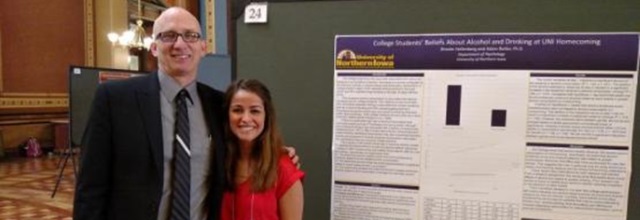Honors Program Theses
Award/Availability
Open Access Honors Program Thesis
First Advisor
Lauren Nelson
Keywords
Sound--Recording and reproducing--Equipment and supplies; Speech therapy--Instruments;
Abstract
The purpose of this study was to compare recordings of speech samples obtained with a dedicated recording device to those from more readily available devices. Speech recordings are used by professionals in the field of communication sciences and disorders to identify and transcribe features of an individual’s speech, regardless of his or her age. This process requires high-quality recordings, but devices intended to produce such recordings are often expensive, not easily accessible, and have few uses. This research addressed the following questions: (A) What combination of microphones and recording devices provides the clearest speech sample based on a signal-to- noise ratio? (B) Does peak clipping distort recorded speech samples for certain combinations of microphones and recording devices? (C) Are differences present between the quality of recordings for different devices dependent on the subject’s age (i.e., child or adult)? Participants included 4 male and 5 female adults, ages 18-26, and 4 male and 4 female children, ages 5-10. Participants identified English as their first language, had hearing within normal limits, and had no communication disorders. Each participant was recorded performing three speech tasks. Speech was recorded simultaneously on a dedicated recording device, a personal computer, and an iPad, each paired with an omnidirectional, condenser lavalier microphone. Recordings were analyzed for signal-to-noise ratio (SNR) and instances of peak clipping. Results were compared by device and age group. Analyses revealed that the iPad yielded highest average SNR, but had the most variable values in most comparisons. The dedicated recording device generally had the lowest average SNR, but was the least variable. Peak clipping was not a significant factor for any device. No adult participants produced clipped signals, while three children did. Results suggest that readily available devices such as personal computers and iPads are appropriate for the types of acoustic analysis performed in this study.
Year of Submission
2017
Department
Department of Communication Sciences and Disorders
University Honors Designation
A thesis submitted in partial fulfillment of the requirements for the designation University Honors
Date Original
2017
Object Description
1 PDF file (35 pages)
Copyright
©2017 - Jacquelyn Marie Knustrom
Language
EN
File Format
application/pdf
Recommended Citation
Knustrom, Jacquelyn Marie, "A comparison of technologies for recording speech and the effects of speaker age" (2017). Honors Program Theses. 276.
https://scholarworks.uni.edu/hpt/276



